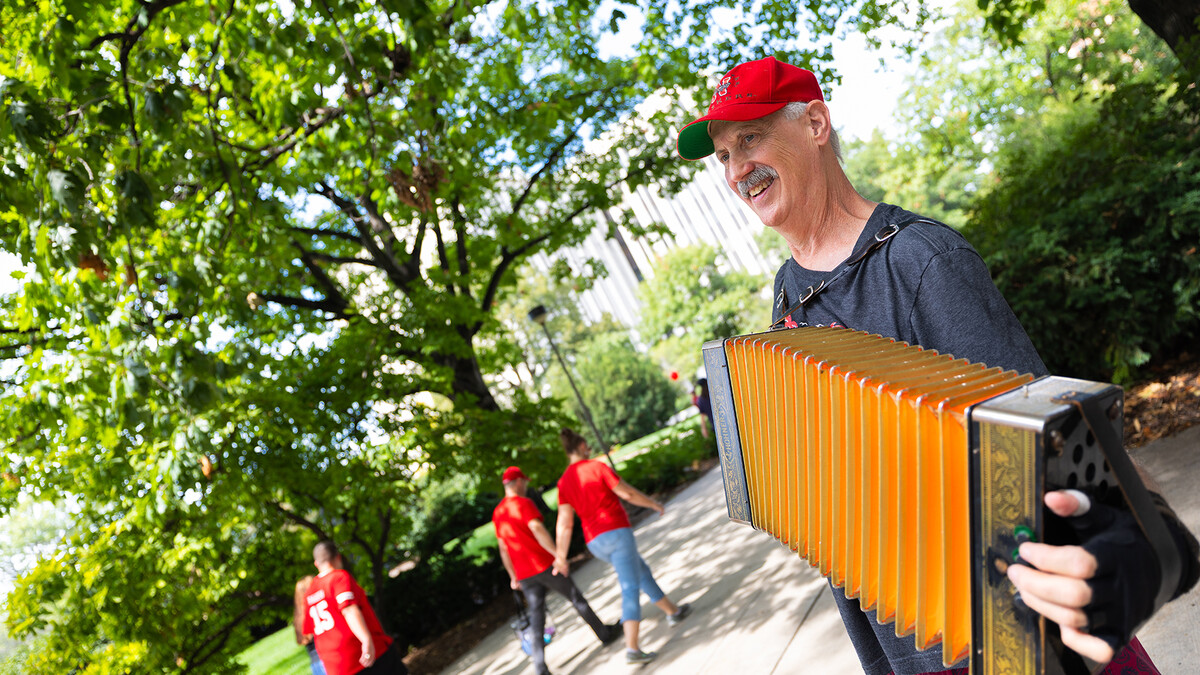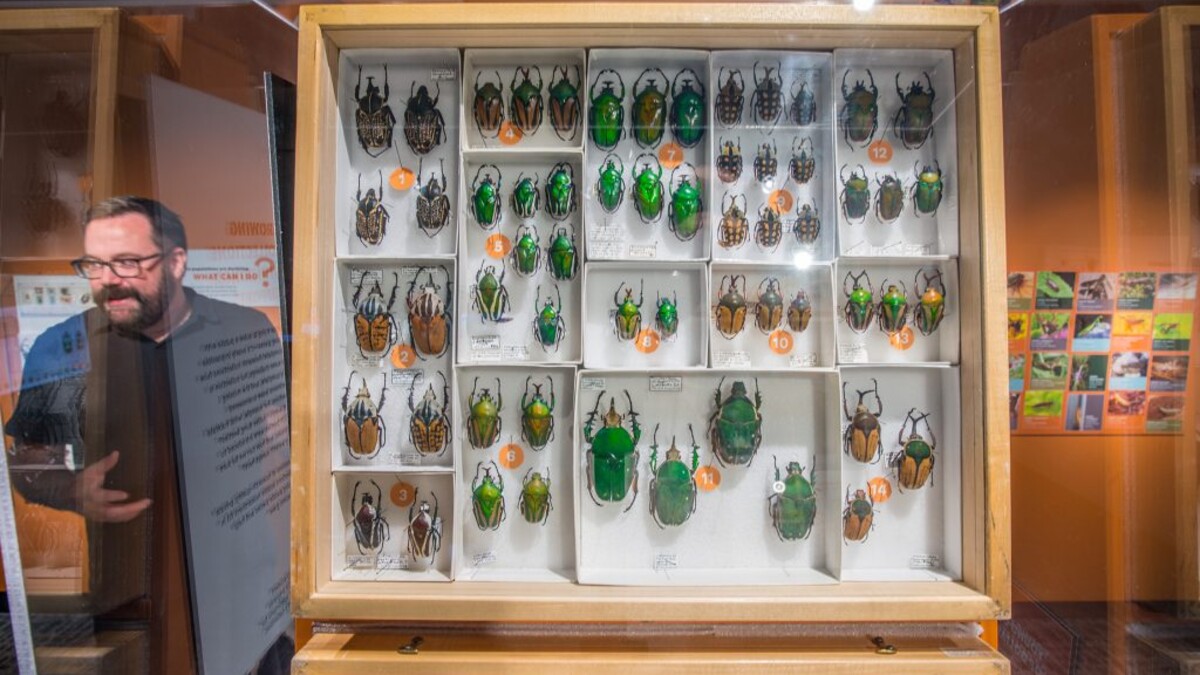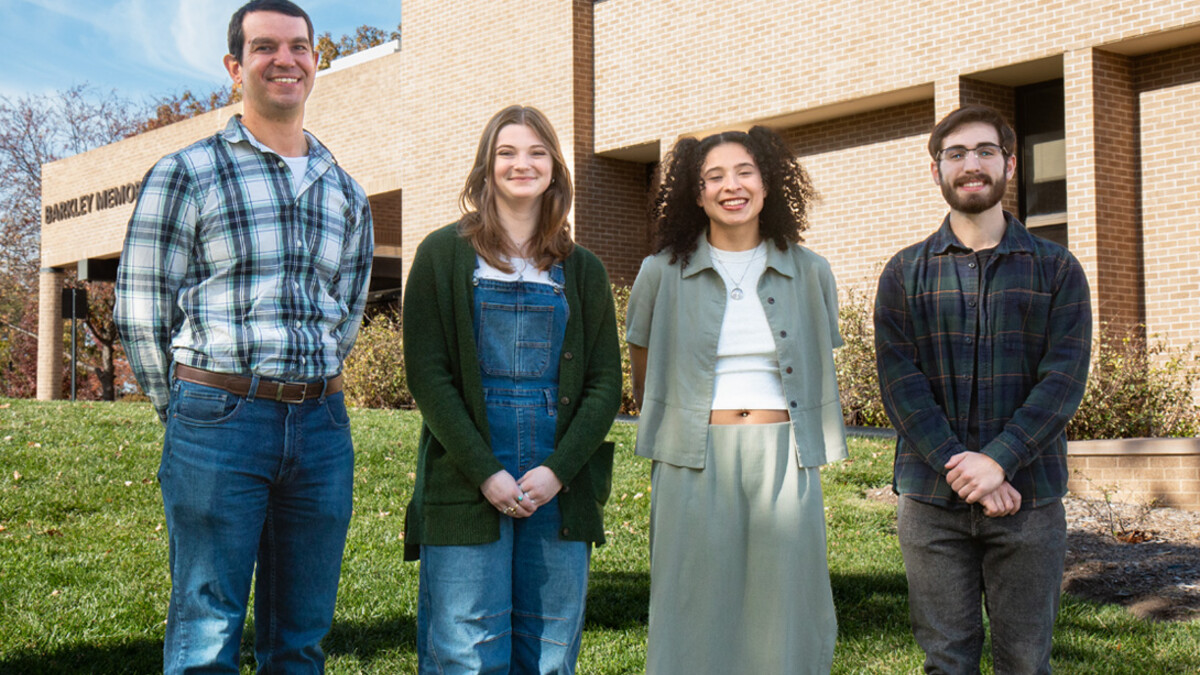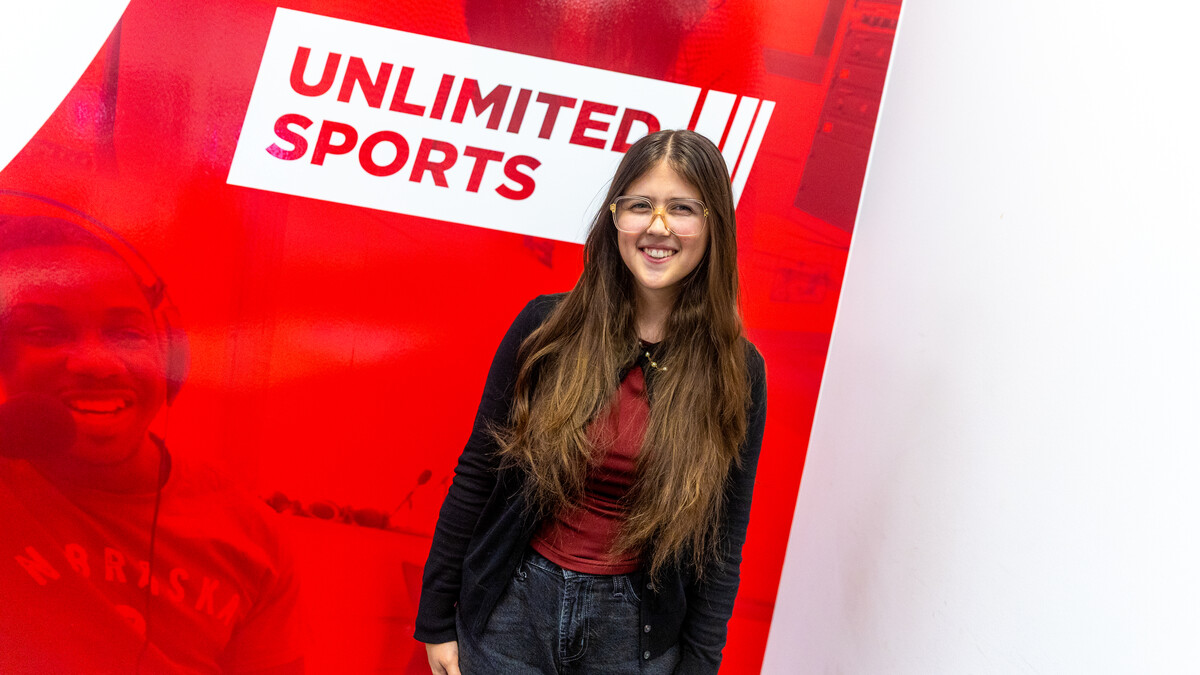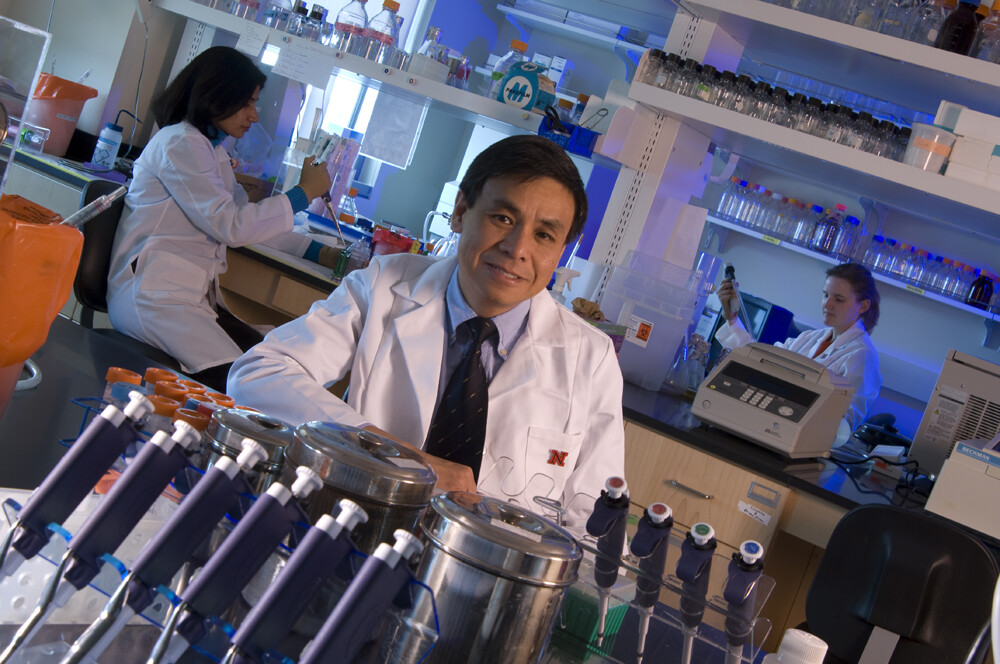
For virologists around the globe, this has been a year of intense research to learn all there is to know about the novel coronavirus: How does it spread? How can it be contained? What harm does it cause and how best to treat it? For virologists like the University of Nebraska-Lincoln’s Charles Wood, whose career spans 40 years, the urgency of the work may feel familiar.
By 1980, a severe immune deficiency later named HIV/AIDS was spreading across continents, and by mid-1983, 1,641 cases had been reported in the U.S. Of those, 644 patients had died. It was starting to become clear that this deadly virus was transmitted by sexual contact, contaminated needles and blood transfusions.
Having recently completed his Ph.D in microbiology at Columbia University, Wood was working at Abbott Laboratories. Abbott is the National Institutes of Health-funded lab in Chicago that two years later would be the first in the world to develop a successful diagnostic test for HIV antibodies. The breakthrough enabled the medical community to ensure a safe supply of donor blood for life-saving blood transfusions.
“It was a turning point of the AIDS epidemic,” said Wood, now the university’s Lewis Lehr/3M University Distinguished Professor of Biochemistry and internationally recognized researcher in molecular virology, HIV/AIDS epidemiology and Kaposi’s sarcoma-associated herpes virus. He took that lab experience back to his alma mater, the University of Kansas, and then the University of Miami as director of immunology in a city rapidly becoming the heart of the country’s HIV epidemic.
Wood arrived at Nebraska in 1996 and by 2000 he was the founding director of the Nebraska Center for Virology, an NIH Center for Biomedical Research Excellence. The center leveraged the expertise and facilities of the University of Nebraska-Lincoln, the University of Nebraska Medical Center and Creighton University to study viral threats to people, animals and plants and find new ways to treat or prevent diseases caused by HIV, herpes, hepatitis and other major viruses. In its first eight years, Public Health Service funding for research at the University of Nebraska-Lincoln increased by more than 300%. Then in 2008, the Ken Morrison Life Sciences Research Center was completed to house the center and its faculty. It was expanded with an $8 million NIH grant in 2014.
Had this been the extent of Wood’s research leadership, his contributions would be impressive. But those familiar with his work say his most significant accomplishments are found halfway across the world. For more than two decades, he has worked with African colleagues on basic and clinical research and training initiatives in nations hit hard by the global HIV/AIDS pandemic.
Wood has led pioneering work in Zambia investigating HIV transmission from mothers to infants and the transmission of Kaposi’s sarcoma, a human herpes virus linked to a cancer common in AIDS patients. His research resulted in the discovery that KSHV can be transmitted perinatally, which together with HIV contributes to the increase of Kaposi’s sarcoma in children throughout Africa. More recently, in collaboration with the Centers for Disease Control’s Global AIDS Program in Zambia, he determined the early childhood KSHV infection rate.
John West is a University of Nebraska-Lincoln research associate professor of biochemistry and a colleague of Wood’s since the start of NCV. He directs the laboratory core component of the U54 CRITIC Project, a more recent effort to study HIV-associated malignancies at the Ocean Road Cancer Institute in Tanzania.
“Charlie has had the vision for relatively noncomplex techniques and methods to be transferred from UNL to Africa in order to get really high-value findings and transfer that to high value funding. That takes a willingness to manage complicated logistics, lots of travel, maddening phone calls, finding generators, a week in a hotel with no running water… Not every researcher can work in these conditions.”
“We have built from absolutely zero two labs in two countries in major hospitals on par with any facility on the continent,” West said. “Every year we try to incrementally add instrumentation, but it won’t work if it rusts. We need personnel and to keep it in country. At last count we have trained more than 60 trainees, and all but two or three are still somewhere in the program, as professors, as clinicians and in the government.”
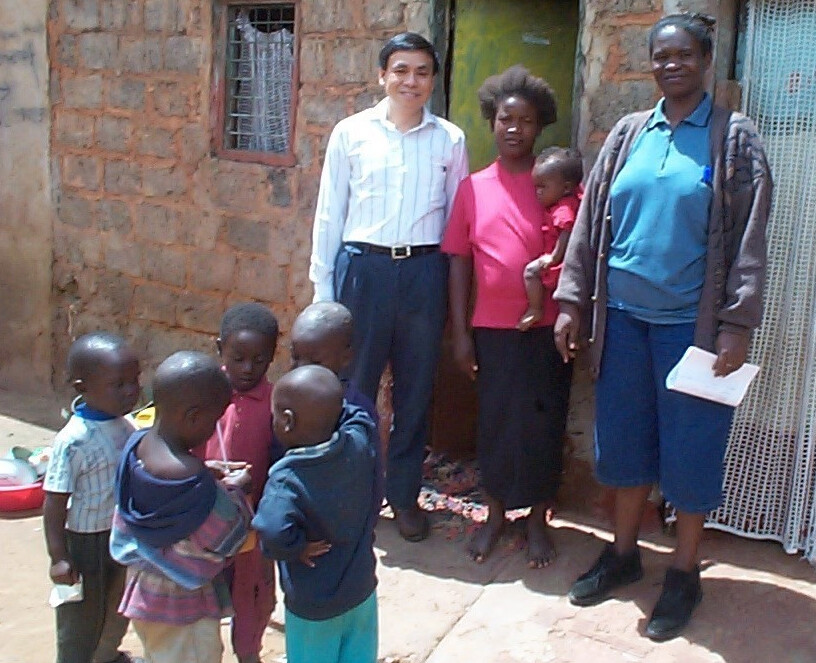
Wood recalled that the early phases of these projects were challenging because he needed access to HIV patients to do testing, but the managing doctors at the hospitals believed that doctors are supposed to see patients, not conduct research. They didn’t want the distraction.
“We started to talk to different people. We had no lab. We recruited technicians, brought equipment and got a room in the back of the hospital to have our own space. Soon we needed to build our own clinic to see our own patients, have our own staff, nurses and team. So, we renovated an old building to do the high-powered molecular work, and now it’s being used as a reference lab for the CDC.”
Early on, he would send to Nebraska doctors who were willing to be trained as researchers. Some would stay long enough to attain degrees before returning home to join the effort. Now that the project is more established, there is enough support to provide training for them on site. Researchers can attain their Ph.D. as the project has evolved to meet the needs of the researchers in their own countries, often with the support of NIH Fogarty global health research funds.
“We’re on second and third generation of trainees in Zambia,” Wood said. “This is the way we do hybrid programs to train people and treat human resources as infrastructure. The key is to empower them. Key to that progress was helping to change the mentality of the hospitals by getting doctors on board as researchers. Once they could see the benefit of research on their patients, they wanted to help.”
Geraldina Dominguez, director of the AIDS Malignancy Program at NIH’s National Cancer Institute, has long been familiar with Wood’s work and has visited the labs established in Zambia and Tanzania.
“For the diseases he works on, there is no better place. When he travels, his suitcase is full of supplies he brought with him. He’s gone to these low resource countries, set up a lab, a space to see patients. It’s amazing, and he can do this because he has the cooperation and buy-in of the locals, doctors and ministries of health. To work in these countries you have to have that.”
Wood credited co-investigator Chipepo Kankasa, a pediatrician and director of the University of Zambia Teaching Hospital HIV/AIDS program, for keeping the research running for 20 years. Wood said he saw other programs start and fail due to a tendency of “scientific imperialism,” or not giving ownership of the work to those working in their home countries.
“They have the training and the facility to do their work,” Wood said. “That’s the key to building transparency and relationships. Just having it run by U.S. people is not the right model. They want a bigger role to be played by locals. Chipepo and I are co-investigators. I don’t think it’s fair to go there, take all the samples, and then leave. That’s not the way to sustain a relationship.”
Owen Ngalamika, a doctor at the UTH in Zambia and director of its skin and STI clinic, can attest to the importance of relationships and mentorship. He is a recipient of the NIH Emerging Global Leader award and is a principal investigator in the lab.
“You can’t do proper research without a proper lab,” Ngalamika said. “But this work is not just running the lab and getting published. It’s how to get funding, acquire staff, establish collaborations. If you can’t get funding, there’s not much you can do. You need to learn to write a grant, get published in a good journal and put those things together. Dr. Wood has been able to guide me and others in so many ways — not just on how to design research.”
Wood said Ngalamika is a great example of the program’s success and the potential for creating lasting impact from these relationships.
“We mentored Owen — he was a doctor — and we got him engaged in research. Now he’s running the lab. I want things to continue after me, to let go and have them take over. Having the right partners is so important. Promote and let go.”
Dominguez had some advice for early career researchers who are inspired by Wood’s international impact:
“Find a mentor like Charlie Wood. You have to be mentored, whether you’re a young fellow or you want to do work in low- and middle-income countries. It’s difficult to do that without support and he has done a great job of that; many of his mentees are already seeking funding on their own. That’s a tremendous compliment to Charlie.”
